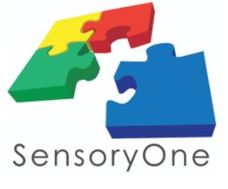
In the realm of therapeutic learning programs for children with autism, sensory rooms and equipment have emerged as invaluable tools to promote development, comfort, and well-being. Autism spectrum disorder (ASD) is a neurodevelopmental condition that affects sensory perception, making individuals with autism highly sensitive to their surroundings. Sensory rooms, specifically designed environments that engage the senses, and sensory equipment, which includes a wide array of tools and devices, play a pivotal role in creating supportive learning environments for children with autism. In this article, we will delve into the SEO-optimized discussion of the manifold benefits of sensory rooms and equipment in therapeutic learning programs for these children.
- Sensory Regulation
One of the most significant benefits of sensory rooms and equipment is their capacity to regulate sensory input for children with autism. These individuals often experience sensory overload, which can lead to meltdowns, anxiety, and an inability to focus. Sensory rooms provide a controlled and calming space where children can explore various sensory experiences at their own pace. The equipment within these rooms, such as soothing lights, textured surfaces, and weighted blankets, helps children regulate their sensory input, leading to improved self-regulation skills.
- Enhanced Communication
Effective communication can be challenging for children with autism, and sensory rooms can be instrumental in fostering communication skills. Sensory equipment like communication boards with tactile symbols, interactive screens, and sound-emitting devices can help children with autism learn to express their needs, desires, and emotions more effectively. By providing a sensory-rich environment, these tools encourage children to engage in verbal and non-verbal communication, ultimately supporting language development.
- Improved Social Interaction
Children with autism often struggle with social interactions and may experience difficulties in forming connections with their peers. Sensory rooms and equipment can act as a bridge to enhance social engagement. Group activities within sensory rooms promote cooperation, sharing, and turn-taking, while sensory equipment like interactive games encourage interaction with peers. This socialization can lead to improved social skills, increased confidence, and a greater sense of belonging among children with autism.
- Sensory Integration
Sensory integration, the ability to process and make sense of sensory information, is a fundamental aspect of a child’s development. Children with autism frequently encounter challenges in this area. Sensory rooms and equipment are specifically designed to facilitate sensory integration. Activities like swinging, bouncing on trampolines, and playing with tactile materials help children process sensory input more efficiently, leading to improved coordination, attention, and motor skills.
- Stress Reduction
Sensory rooms and equipment serve as safe havens for children with autism, offering a space where they can escape from the overwhelming sensory stimuli of the outside world. This respite allows them to reduce stress, anxiety, and sensory-related discomfort. Equipment like calming lights, weighted blankets, and sensory bins filled with soothing materials help children relax and recharge, enabling them to engage more effectively in therapeutic learning activities.
- Personalized Learning
Every child with autism is unique, and their sensory preferences and needs vary widely. Sensory rooms and equipment can be customized to cater to individual requirements, making them ideal for personalized learning programs. Therapists and educators can tailor the sensory experiences to match each child’s sensory profile, ensuring that they receive the most effective support for their development and learning journey. Sensory rooms help regulate behaviour, and thereby can provide better conditions for learning.
- Increased Engagement
Sensory-rich environments created by sensory rooms and equipment capture the attention and interest of children with autism. This heightened engagement can be leveraged to enhance learning experiences. Educational content delivered within sensory rooms becomes more appealing and accessible, leading to better retention of information and skills acquisition.
Improved Therapeutic Outcomes with Sensory Rooms
In the realm of therapeutic learning programs for children with autism, sensory rooms and equipment stand as powerful allies in promoting development, comfort, and well-being. These specialized tools offer a myriad of benefits, from sensory regulation and enhanced communication to improved social interaction, sensory integration, and stress reduction. The capacity for personalization and the ability to increase engagement make sensory rooms and equipment invaluable resources in supporting the unique needs of children with autism. As the understanding of autism and its therapeutic approaches continues to evolve, sensory rooms and equipment remain steadfast in their mission to provide a nurturing environment where children with autism can thrive and reach their full potential.



